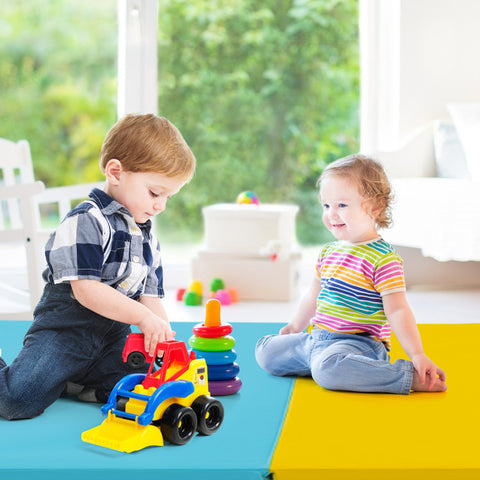News
Best Gymnastics Mats: Safety, Types, and Buying Guide
Gymnastics is a sport that requires balance, strength, flexibility, and precision. Whether you’re a beginner practicing cartwheels or an advanced gymnast perfecting tumbling passes, safety should always come first. That’s where gymnastics mats play a vital role. These mats not only provide cushioning to prevent injuries but also create a stable surface for training.
In this article, we’ll cover everything you need to know about gymnastics mats—their benefits, types, features to look for, maintenance tips, and the best options for home or professional use.
Why Gymnastics Mats Are Important
1- Injury Prevention – Mats reduce impact on joints and minimize the risk of sprains, fractures, or bruises.
2- Confidence for Beginners – New learners feel more secure when practicing on padded surfaces.
3- Professional Training Support – Advanced gymnasts can practice high-level skills safely.
4- Multi-purpose Use – Many mats are suitable for yoga, martial arts, cheerleading, and home fitness.
Types of Gymnastics Mats
1. Folding Mats
- Portable and easy to store.
- Ideal for home practice and light training.
- Often come in 3- or 4-panel designs.
2. Tumbling Mats
- Long and narrow mats designed for continuous floor exercises.
- Perfect for flips, rolls, and cheerleading stunts.
- Usually inflatable or extra thick for cushioning.
3. Crash Mats
- Extra-thick mats (up to 12 inches).
- Used for high-impact landings and advanced gymnastics.
- Essential in professional gyms and training centers.
4. Incline Mats (Wedge Mats)
- Shaped like a wedge to help with rolls and basic skill progression.
- Great for beginners learning proper body positioning.
5. Balance Beam Mats
- Narrow mats that simulate balance beam practice.
- Help improve balance and coordination without the risk of falls from height.
Key Features to Look for When Buying a Gymnastics Mat
1- Thickness – Choose at least 1.5–2 inches for beginners, and thicker crash mats for advanced training.
2- Material – High-density foam with durable vinyl or PU leather cover for long-lasting performance.
3- Size – Match the mat size to your available space and training needs.
4- Portability – Folding mats or mats with handles are easier to carry and store.
5- Non-Slip Base – Prevents slipping during practice.
6- Easy Cleaning – Wipe-clean covers resist sweat and dust.
7- Interlocking Options – Some mats connect with Velcro strips to create larger practice areas.
Best Uses of Gymnastics Mats
1- Home Practice: Safe surface for kids or beginners.
2- Professional Gyms: Essential for advanced routines.
3- Schools & Training Centers: For group practice and classes.
4- Cheerleading & Dance: Support for tumbling and floor work.
5- General Fitness: Can double as yoga or workout mats.
Maintenance Tips for Gymnastics Mats
1- Wipe down with mild soap and water after use.
2- Avoid exposure to direct sunlight for long hours (prevents material cracking).
3- Store in a cool, dry place.
4- Check stitching and Velcro regularly for wear and tear.
5- For inflatable mats, ensure proper air pressure before every use.
Conclusion
Gymnastics mats are more than just training accessories—they are essential tools for safety, confidence, and skill development. From folding mats for home practice to crash mats for professional training, choosing the right mat ensures a secure and effective gymnastics experience.
Whether you’re buying for your child, yourself, or a professional facility, always consider thickness, material, and portability before making a purchase. A good mat will not only prevent injuries but also support progress in the sport.
Frequently Asked Questions (FAQs)
Q1: What thickness should a gymnastics mat be?
A standard thickness of 1.5–2 inches is sufficient for beginners, while advanced gymnasts may need thicker crash mats up to 12 inches.
Q2: Can gymnastics mats be used for other sports?
Yes, they are also great for martial arts, cheerleading, yoga, pilates, and home workouts.
Q3: Are inflatable gymnastics mats safe?
Yes, when inflated properly, air mats provide excellent cushioning and are popular for tumbling practice.
Q4: How do I clean and maintain my gymnastics mat?
Use a damp cloth with mild soap, avoid harsh chemicals, and store in a dry place.
Q5: What’s the best mat for beginners?
Folding mats or incline wedge mats are best for beginners due to their portability and beginner-friendly design.


